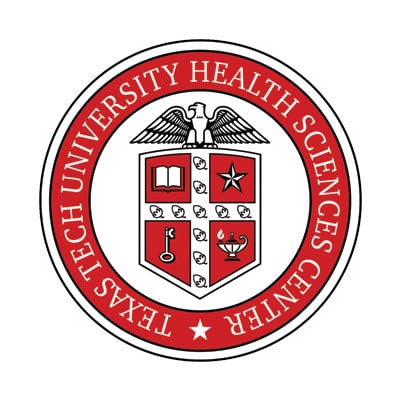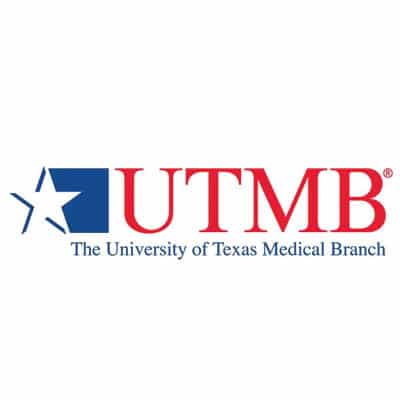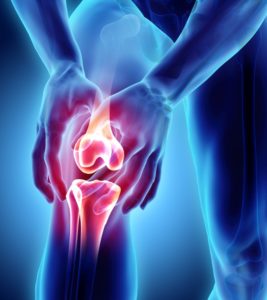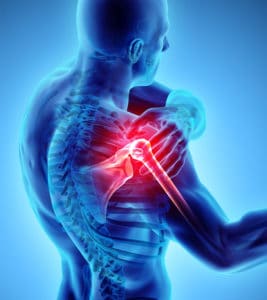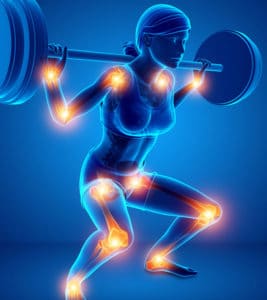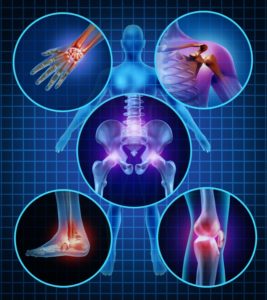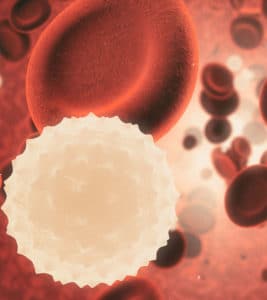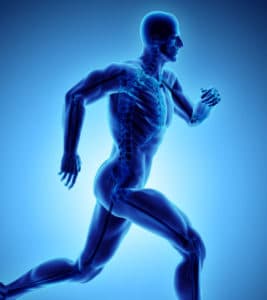Overuse Injuries
Bursitis
Bursitis is a painful inflammation of a bursa, one of the small sacs at the joints that cushion the tendons, muscles and bones. Bursae normally enable fluid movement, but when overtaxed they can inflame and fill with fluid. Once a bursa becomes irritated, gritty and rough, it can create painful friction in the joint. Bursitis usually results either from repetitive stress or sudden injury and presents with swelling, redness and deep, aching pain. The joints most commonly affected by bursitis are the shoulder, elbow, hip and knee.
Risk Factors For Bursitis
Bursitis may result from overuse of a joint during work or play. Aging increases the risk of developing bursitis because as the tendons become less elastic they are more likely to tear. Individuals who work at occupations or engage in activities in which they put repeated pressure on certain joints are potential candidates for the ailment. This includes people who regularly:
- Plant or rake
- Shovel
- Paint houses
- Do carpentry
- Scrub floors
- Lay tiles
- Play golf or tennis
- Pitch baseballs
Other risk factors for bursitis include:
- Medical conditions that causes inflammation, such as arthritis
- Anatomical abnormalities that put unusual stress on a joint
- Certain infections
- Obesity
- Incorrect posture
- Inadequate stretching before exercise
- Reactions to particular medications
Treatment Of Bursitis
Usually bursitis responds to simple remedies, although the inflammation may take a week or many weeks to subside. Patients should see their physicians to rule out more serious injuries. They are typically advised to rest the injured region, avoid activities that intensify discomfort, ice the area, and take over-the-counter anti-inflammatory medications. Sometimes stronger oral medications are prescribed to reduce inflammation and sometimes corticosteroid injections are administered. Physical therapy is often recommended to increase range of motion as healing takes place. Only in rare cases is surgery necessary to treat bursitis.
The bursae at the elbow and knee are located more superficially many others, and so are more prone not only to inflammation, as in “housemaid’s knee,” but also to puncture wounds that can lead to infection. Infection of a bursa is called septic bursitis and must be treated with antibiotics.
Tendonitis
Tendonitis is an inflammation of one of the tendons, the soft flexible cords of tissue that connect muscle to bone. Such inflammations can occur as a result of overuse or traumatic injury. Tendonitis can occur anywhere in the body, but most often occurs in joints such as the shoulder, knee, wrist, ankle and elbow.
Causes Of Tendonitis
Although tendonitis may occur because of a sudden injury, it is much more frequently the result of repetitive stress. Commonly, the condition occurs when an individual makes repetitive motions almost daily because of occupational or athletic pursuits. Tendonitis more often occurs as individuals age and their tendons become less flexible.
People whose employment involves frequent overhead reaching, vibration, repetitive motions or forceful or awkward positions are also at greater risk. Involvement in certain sports also makes individuals more likely to suffer tendonitis. Participants in baseball, basketball, golf, bowling, swimming, tennis an running are particularly vulnerable. Various forms of tendonitis are sometimes known colloquially by the sports that commonly result in the injuries, such as tennis elbow or pitcher’s shoulder.
Taking prescribed antibiotics in the fluoroquinolone family, such as Cipro and Levaquin, also presents a serious risk of tendon injury for which the FDA now requires a “black box” warning.
Symptoms Of Tendonitis
Symptoms of tendonitis include aching pain, tenderness to the touch, and sometimes mild swelling of the area. These symptoms are typically exacerbated by movement.
Diagnosis Of Tendonitis
The broad term for these tendon conditions, which include chronic tendinosis as well as tendonitis, is tendinopathy. Particular tendon disorders are diagnosed through physical examination, X-rays and other imaging tests. Since untreated tendonitis can lead to tendinosis, a chronic and degenerative condition, tendonitis that lasts for more than a few days, should be diagnosed and treated promptly.
Treatment Of Tendonitis
If tendonitis is severe and leads to the rupture of a tendon, surgical repair may be required. In most cases, however, tendonitis can be successfully treated with rest, medications to reduce pain and inflammation, and physical therapy.
Physical therapists, in addition to helping patients strengthen their muscles and stretch to increase flexibility, are often helpful in guiding patients to more efficient movement patterns so they can avoid stressing joints and tendons in the future. Exercises to assist contraction while simultaneously stretching the muscle (eccentric stretches) have been demonstrated to be especially effective in treating muscle-tendon inflammation.
Medial Epicondylitis
Medial epicondylitis, also known as golfer’s elbow, is a painful condition in which the tendons connecting the forearm to the elbow have become damaged due to injury or overuse. Previously thought to be a form of tendonitis, or inflammation of the tendon, medial epicondylitis is now considered to be a form of tendonosis in which the collagen fibers making up the tendon have deteriorated. Patients with this condition experience pain on the inside of the elbow that may radiate into the forearm. This pain results when the epicondyle puts pressure on the ulnar nerve, a nerve in the forearm. Most often, medial epicondylitis can be treated successfully by simple measures like resting the arm and applying ice. In some cases, however, it requires surgical correction.
While it may be caused by a single injury, medial epicondylitis is usually caused by repetitive gripping, flexing and swinging of the arm. These actions, common in golfers, cause the targeted tendons to stretch and tear. Medial epicondylitis is also frequently diagnosed in baseball pitchers, bowlers, tennis players, swimmers and individuals who do painting, raking or hammering since all of these activities involve similar arm motions. This condition is much more common in men than in women, but much less common in either than tennis elbow.The difference between the two conditions is that tennis elbow occurs on the outside of the elbow while golfer’s elbow occurs on the inside.
Symptoms And Diagnosis Of Medial Epicondylitis
Symptoms of medial epicondylitis may appear suddenly or gradually. These symptoms may include:
- Pain on the inside of the elbow or forearm
- Weakness or stiffness in the wrists and hands
- Tingling or numbness in the hand or fingers, particularly the ring finger or pinkie
The pain of medial epicondylitis may worsen with certain actions, such as swinging the arm, squeezing the hand, turning a doorknob or lifting something heavy, especially when the palm is facing downward.
Diagnosis Of Medial Epicondylitis
Medial Epicondylitis is diagnosed through physical examination, the use of X-rays and, on occasion, other diagnostic tests such as MRIs or ultrasound.
Treatment Of Medial Epicondylitis
There are several simple treatment options for medial epicondylitis. The treatments for medial epicondylitis may include:
- Resting the arm
- Wearing a bandage or splint on the wrist or elbow
- Icing the affected region
- Taking over-the-counter pain relievers
- Doing therapeutic exercises
- Receiving electrical stimulation treatments
- Taking prescribed corticosteroids orally or by injection
- Receiving shock wave treatments of the area
The symptoms of medial epicondylitis may resolve in weeks or may persist for months. As the pain subsides, a physical or occupational therapist may suggest different ways of moving the arm to avoid a recurrence of symptoms. If the condition lasts more than 3 to 6 months, becoming chronic, surgery may be considered.
Surgical Repair Of Medial Epicondylitis
There are several types of surgery performed to repair medial epicondylitis. Such surgeries may be performed arthroscopically or as open surgery and are normally done outpatient with a local anesthetic. They usually take between 3 and 4 hours to complete. Most patients may return to a relatively normal routine in about 4 weeks, but may have residual discomfort, weakness or numbness for several months following surgery. Post-surgical physical therapy is usually required. Types of procedures used for surgical repair of medial epicondylitis may include:
Tendon Debridement – in which only the affected tissues within the tendon are removed, or debrided
Medial Epicondyle Release or Epicondylectomy and Ulnar Nerve Release – in which the medial epicondyle is removed, allowing the ulnar nerve to glide freely, releasing it from what is known as ulnar nerve entrapment
Ulnar Nerve Transposition – in which the forearm muscles are cut and temporarily disconnected from the epicondyle so that the ulnar nerve can be moved from behind the elbow to in front of it
Risks Of Surgical Repair Of Medial Epicondylitis
While the surgical procedures discussed are considered safe, there are potential risks with any surgery which may include:
- Excessive bleeding
- Blood clots
- Adverse reactions to anesthesia or medications
- Post-surgical infection
- Breathing problems
Risks of the specific surgeries discussed may include a condition known as chronic regional pain syndrome, or CRPS. This complication, which is rare, may cause ongoing swelling, pain, skin discoloration and stiffness.
Lateral Epicondylitis
Lateral epicondylitis, also known as tennis elbow, is an elbow injury that occurs as a result of the overuse of the muscles and tendons of the forearm and elbow. The pain associated with this condition affects the lateral epicondyle, the area where the tendons of the forearm connect with the bony outer portion of the elbow. Repetitive movement and constant use during certain types of activities may put excessive strain on the elbow tendons. Tennis elbow may occur in tennis players or individuals who participate in certain athletic activities, but may also occur in people who have jobs that involve repetitive motions of the wrist and arm, such as carpenters, or people in construction related trades.
Symptoms Of Tennis Elbow
The symptoms of tennis elbow affect the inside of the elbow, and may include:
- Forearm weakness
- Pain when the wrist is extended
- Pain that spreads from the outside of the elbow into the forearm and wrist
Pain may occur when performing even simple tasks such as turning a doorknob or shaking hands.
Diagnosis Of Tennis Elbow
Tennis elbow is diagnosed through a physical examination of the arm and elbow, and a review of the patient’s medical history. To assess pain, pressure may be applied to the elbow and the individual may be asked to move the arm, wrist and elbow in different ways. Additional diagnostic tests may include:
- X-ray
- MRI scan
- EMG
These tests may be performed to rule out other conditions that may be responsible for causing elbow pain.
Treatment For Tennis Elbow
The initial pain caused by tennis elbow can often be managed with rest, ice and over-the-counter pain medication. In many cases, tennis elbow heals on its own. Cases of tennis elbow that do not respond to conservative measures may require additional treatment that may include:
- Physical therapy
- Corticosteroids
- Exercises
- Forearm brace
Severe, persistent cases of tennis elbow may require surgery. Surgical procedures may be performed to remove damaged tissue, remove bone spurs or to split the tendons to alleviate pressure.
Lateral Epicondylitis
Lateral epicondylitis, also known as tennis elbow, is an elbow injury that occurs as a result of the overuse of the muscles and tendons of the forearm and elbow. The pain associated with this condition affects the lateral epicondyle, the area where the tendons of the forearm connect with the bony outer portion of the elbow. Repetitive movement and constant use during certain types of activities may put excessive strain on the elbow tendons. Tennis elbow may occur in tennis players or individuals who participate in certain athletic activities, but may also occur in people who have jobs that involve repetitive motions of the wrist and arm, such as carpenters, or people in construction related trades.
Symptoms Of Tennis Elbow
The symptoms of tennis elbow affect the inside of the elbow, and may include:
- Forearm weakness
- Pain when the wrist is extended
- Pain that spreads from the outside of the elbow into the forearm and wrist
Pain may occur when performing even simple tasks such as turning a doorknob or shaking hands.
Diagnosis Of Tennis Elbow
Tennis elbow is diagnosed through a physical examination of the arm and elbow, and a review of the patient’s medical history. To assess pain, pressure may be applied to the elbow and the individual may be asked to move the arm, wrist and elbow in different ways. Additional diagnostic tests may include:
- X-ray
- MRI scan
- EMG
These tests may be performed to rule out other conditions that may be responsible for causing elbow pain.
Treatment For Tennis Elbow
The initial pain caused by tennis elbow can often be managed with rest, ice and over-the-counter pain medication. In many cases, tennis elbow heals on its own. Cases of tennis elbow that do not respond to conservative measures may require additional treatment that may include:
- Physical therapy
- Corticosteroids
- Exercises
- Forearm brace
Severe, persistent cases of tennis elbow may require surgery. Surgical procedures may be performed to remove damaged tissue, remove bone spurs or to split the tendons to alleviate pressure.
Rehabilitation For Lateral Epicondylitis
Lateral epicondylitis, also known as tennis elbow, is an elbow injury that occurs as a result of the overuse of the muscles and tendons of the forearm and elbow. The pain associated with this condition affects the lateral epicondyle, the area where the tendons of the forearm connect with the bony outer portion of the elbow. Repetitive movement and constant use during certain types of activities may put excessive strain on the elbow tendons. Tennis elbow may occur in tennis players or individuals who participate in certain athletic activities, but may also occur in people who have jobs that involve repetitive motions of the wrist and arm, such as carpenters, or people in construction related trades.
The initial pain caused by tennis elbow can often be managed with rest, ice and over-the-counter pain medication. In many cases, tennis elbow heals on its own. Conditions that do not respond to conservative measures may require additional treatment, in the form of physical therapy, exercises, orthotics, or corticosteroids. Severe, persistent cases of tennis elbow may require surgery.
Nonsurgical Rehabilitation For Lateral Epicondylitis
Patients with mild cases of lateral epicondylitis may benefit from physical therapy to minimize pain and restore movement. Initial physical therapy treatments control pain and promote healing by using ice or electrical stimulation. Massage may also be used to ease muscle pain. A physical therapist will guide the patient in exercises to gradually stretch and strengthen the muscles of the forearm. Recommendations may also be made to help alleviate the stress to the injured muscles and avoid re-injury. With physical therapy treatment, recovery may take about 3 months, however, with more severe cases of tennis elbow, recovery may take up to 6 months.
Rehabilitation After Surgery
Severe cases of lateral epicondylitis that do not respond to other treatments may require surgery to alleviate pain and restore movement to the elbow. Surgical procedures may be used to remove damaged tissue, remove bone spurs or to split the tendons to alleviate pressure. After surgery the elbow is placed in a splint and initial physical therapy treatments may include ice, electrical stimulation and massage, to help control pain, swelling and muscle spasms. About 2 or 3 weeks after surgery, a physical therapist will prescribe exercises that work and stretch the muscles of the forearm without straining the healing tissues. Additional physical therapy treatments may include:
- Muscle strengthening exercises
- Range of motion exercises
- Exercises for fine motor skills
- Hand dexterity exercises
Physical therapy treatments focus on helping the patient return to all usual activities. After surgery, physical therapy may be necessary for up to 4 months and full recovery may take up to 6 months.



